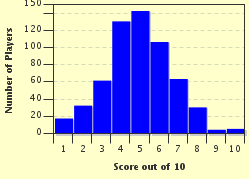Quiz Answer Key and Fun Facts
1. The rationing program was supervised by the OPA. What did OPA stand for?
2. What was the main reason for rationing gas? To save gas or to save rubber?
3. The most restrictive gas ration card was known as the 'A' card. How many gallons of gas did it allow one able to purchase in a week?
4. Most of the rationing started in 1942. What item stayed on the ration list the longest?
5. Another item that was rationed was clothing. Which one of these restrictions was NOT a requirement?
6. For food rationing, how many ration books would have been issued to a family of four consisting of two adults and two children?
7. Suppose a can of peas was sixteen points. Your ration coupons are in fives. You give the grocer twenty points. What happens next?
8. Typically, each ration book had 48 points per month. Which of these four items would have cost the most ration coupons?
9. Which of these items were NOT on on the lengthy ration list?
10. Rationing caused Americans to be creative with necessary but rationed items. Which of these was NOT a positive benefit of the era of rationing?
Source: Author
Rehaberpro
This quiz was reviewed by FunTrivia editor
bloomsby before going online.
Any errors found in FunTrivia content are routinely corrected through our feedback system.

